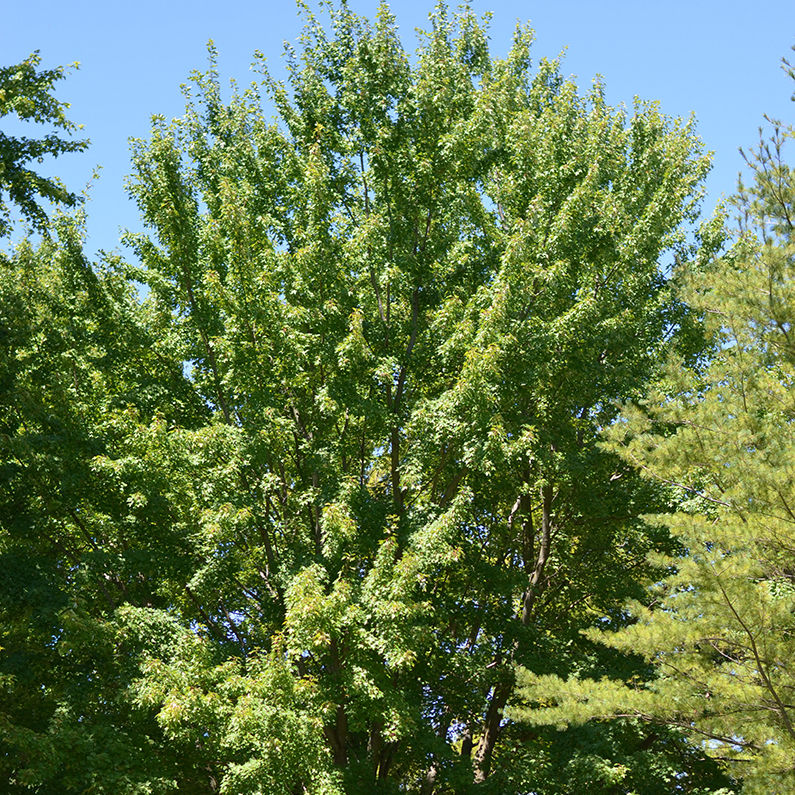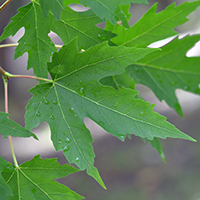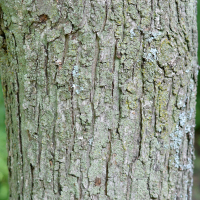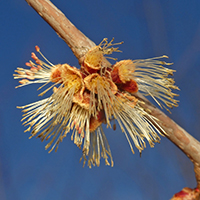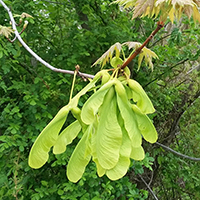What silver maple looks like
Size and shape
- Large tree.
- Reaches 35 metres tall.
- Trunk reaches more than 100 centimetres in diameter.
Leaves
- Light green leaves (15 to 20 centimetres long).
- Have 5 or 7 lobes.
Bark
- Smooth and gray when the tree is young.
- Becomes dark and reddish brown with age.
- Breaks into strips that peel off at either end and make the trunk look shaggy.
Flowers
- Silver maple flowers lack petals.
- Flowers appear in early spring before the leaves.
Fruit
- Seeds are found in ‘keys’ that fall from the tree in late spring.
Where silver maple is found
Silver maple grows across Central and Southern Ontario and in some parts of Northwestern Ontario.
What you need to know to grow silver maple
- Moisture: grows best in moist soil.
- Shade: slightly shade tolerant but grows best in full sun.
- Soil: grows best in rich soil.
- Cautions:
- space: Silver maple is a large tree, so make sure it has plenty of room to grow
- location: Silver maple is not a good tree to plant next to city streets, because its many leaves that fall off in autumn and widespread roots can clog sewer pipes
Benefits and uses of silver maple
Wildlife benefits
Silver maple is a food source for squirrels, beaver and deer. Silver maple also provides habitat for birds and other small animals in the crown and trunk hollows.
Commercial uses
Wood from silver maple is used for:
- flooring
- veneer
- pulp
- musical instruments
Fun facts about silver maple
- Silver maple grows quickly and is often planted to provide shade or to block unsightly views.
- Silver maple is very similar to red maple except that its leaves turn pale yellow or brown, not red, in fall.
- Sometimes the trunks of silver maples are hollow, creating space for animals and birds to live in.
Updated: November 22, 2023
Published: July 18, 2014
